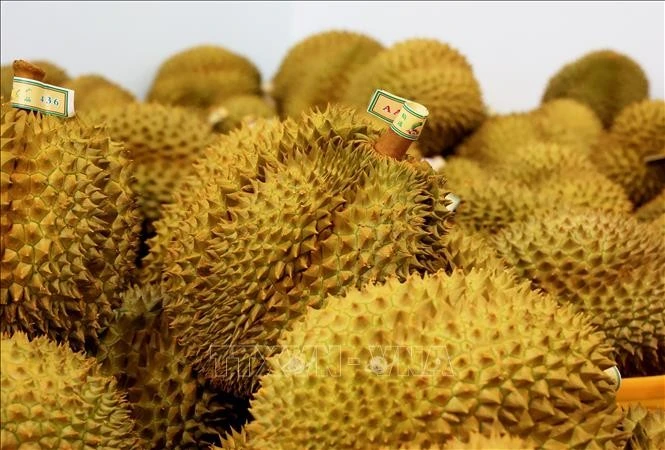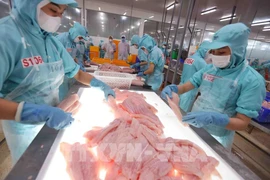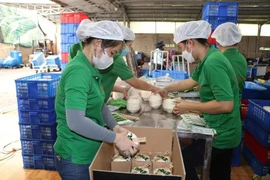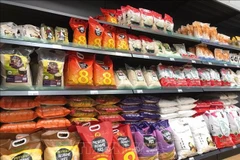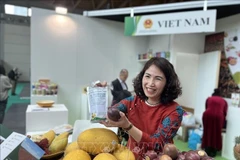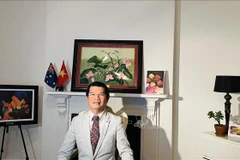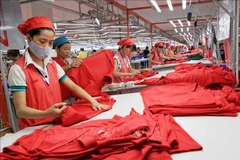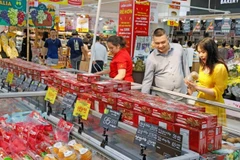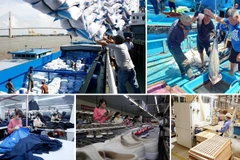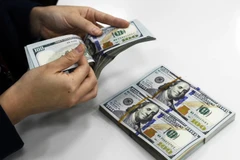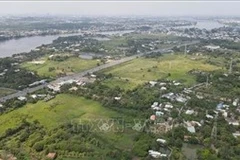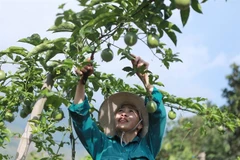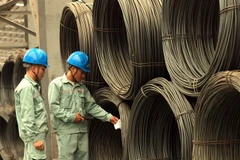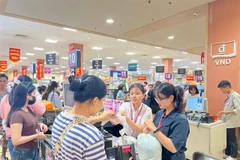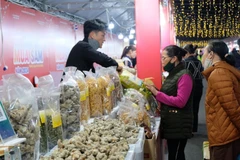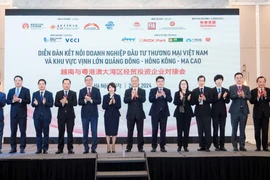Hanoi (VNA) - Vietnam’s efforts in expanding export markets for its fruits and vegetables in 2024 has paid off as for the first time, the export of these products has brought home 7.2 billion USD, much higher than the figure of 3.3 billion USD two years ago.
Vietnamese pomelos have officially entered the Republic of Korean, while passion fruits have made their way to Australia. Additionally, Vietnam and China signed protocols to facilitate Vietnamese fresh coconuts and frozen durians to enter the Chinese market. Particularly, Vietnam’s fruit and vegetable exports to China exceeded 4 billion USD this year.
Deputy Director of the Plant Protection Department under the Ministry of Agriculture and Rural Development (MARD) Nguyen Quang Hieu said that this success is not only due to the introduction of new products into the markets but also reflects the ability of Vietnamese fruits to meet import requirements. It highlights the awareness among producers and exporters about adhering to regulations when entering new markets.
Discussing the negotiation and market entry processes, particularly for frozen durians and other agricultural products into China, Hieu noted that the department has successfully aligned the agreement terms with both Chinese regulations and Vietnam's production conditions, yielding significant benefits for businesses, cooperatives, and farmers in terms of both input costs and administrative procedures.
The positive results of fruit exports are also attributed to efforts in guiding farmers to successfully implement off-season cultivation techniques.
Nguyen Quoc Manh, Deputy Director of the MARD's Crop Production Department, said that the economic benefits of off-season cultivation for five fruit types - dragon fruit, mango, rambutan, durian, and longan - have increased by 1.5 to 2 times compared to traditional harvesting seasons. This allows Vietnam to export fruits all year-round, with durian as a prime example.
However, the success of market openings and the processing industry has put the coconut sector at risk of severe raw material shortages.
Nguyen Thi Kim Thanh, President of the Vietnam Coconut Association, said that many companies have invested in facilities and factories in the southern province of Ben Tre - the coconut capital of Vietnam, but the local supply is insufficient. As a result, many enterprises have had to halt operations or function at minimal capacity, achieving only 10-15% of their potential output.
Over the past decade, companies engaging with the global market have recognised trends and invested heavily in modern machinery. Currently, Vietnam's coconut processing technology is on par with international standards.
Vietnam's coconuts are becoming a high-value export item, and processed coconut products have significant potential to enhance the value of coconuts and increase incomes for local farmers. In 2024, the export turnover of coconuts is expected to reach 900 million USD, setting a new record.
Nguyen Thi Thanh Thuy, Director of the MARD’s Department of Science, Technology, and Environment, said that in addition to fresh coconut exports, the coconut processing industry now accounts for over 70% of export value. Almost every part of the coconut is utilised, which is essential for developing a circular and multi-value agricultural model.
Nguyen Thanh Binh, President of the Vietnam Vegetable and Fruit Association, emphasised that for Vietnamese products to penetrate deeper into China, Vietnam must address the issues of long transport distance, higher costs, high rates of spoiled products.
Vietnam must restructure fruit production to ensure large-scale, concentrated production that meets high-quality standards and complies with market regulations. While issues of area codes, packaging codes, and quarantine subjects are not new, Vietnamese companies need to excel in these areas to enter the Chinese market more effectively.
Additionally, investment in post-harvest processing technology and preservation methods during transport, storage, and distribution is essential. Efficient transport methods are needed to ensure Vietnamese fruits reach distant regions as quickly as possible. There is also a need to diversify products, including not just fresh fruits but processed items and a wider variety, to enhance consumer choices, Binh emphasised./.
